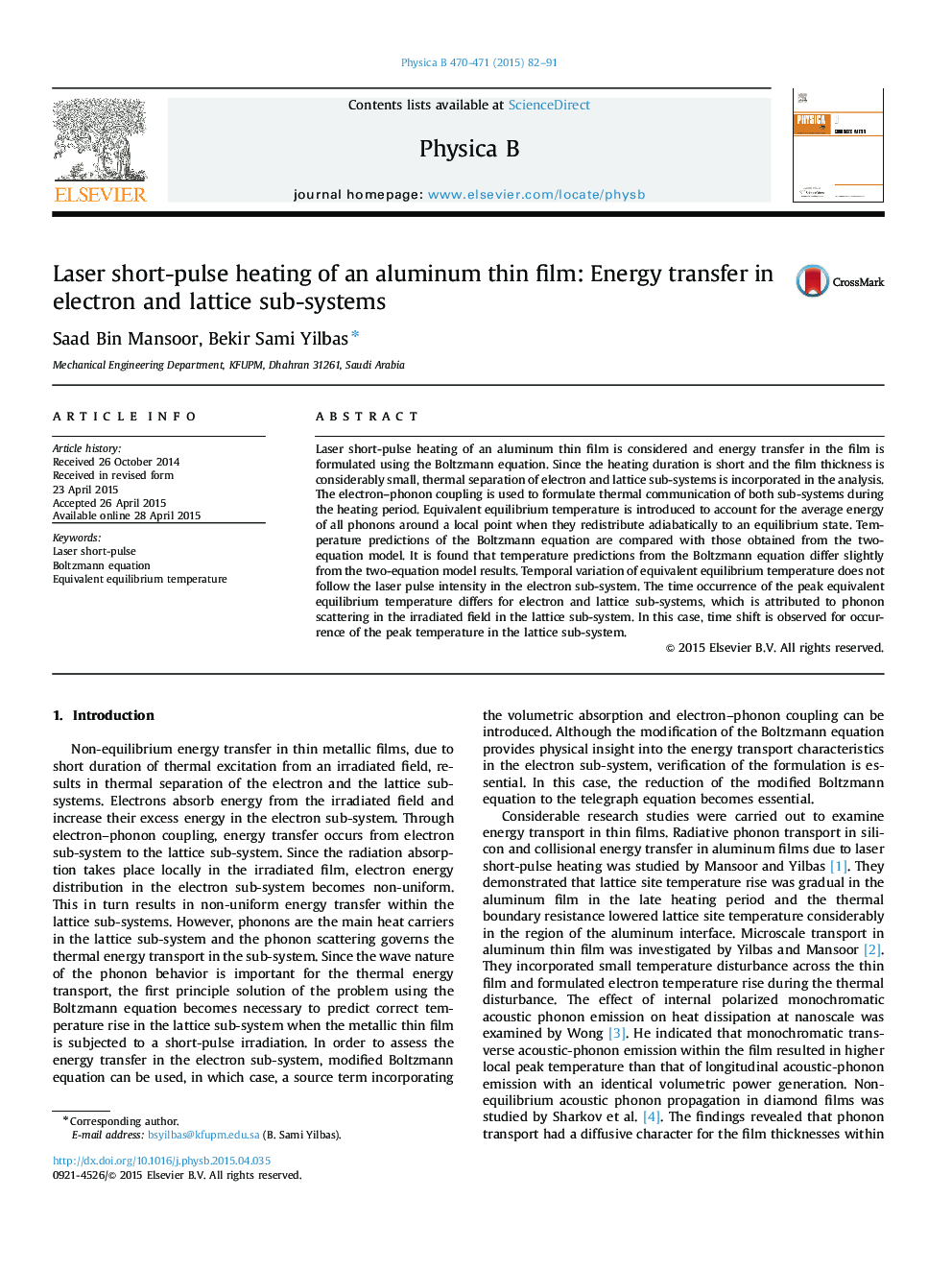| Article ID | Journal | Published Year | Pages | File Type |
|---|---|---|---|---|
| 1808845 | Physica B: Condensed Matter | 2015 | 10 Pages |
Abstract
Laser short-pulse heating of an aluminum thin film is considered and energy transfer in the film is formulated using the Boltzmann equation. Since the heating duration is short and the film thickness is considerably small, thermal separation of electron and lattice sub-systems is incorporated in the analysis. The electron-phonon coupling is used to formulate thermal communication of both sub-systems during the heating period. Equivalent equilibrium temperature is introduced to account for the average energy of all phonons around a local point when they redistribute adiabatically to an equilibrium state. Temperature predictions of the Boltzmann equation are compared with those obtained from the two-equation model. It is found that temperature predictions from the Boltzmann equation differ slightly from the two-equation model results. Temporal variation of equivalent equilibrium temperature does not follow the laser pulse intensity in the electron sub-system. The time occurrence of the peak equivalent equilibrium temperature differs for electron and lattice sub-systems, which is attributed to phonon scattering in the irradiated field in the lattice sub-system. In this case, time shift is observed for occurrence of the peak temperature in the lattice sub-system.
Keywords
Related Topics
Physical Sciences and Engineering
Physics and Astronomy
Condensed Matter Physics
Authors
Saad Bin Mansoor, Bekir Sami Yilbas,
